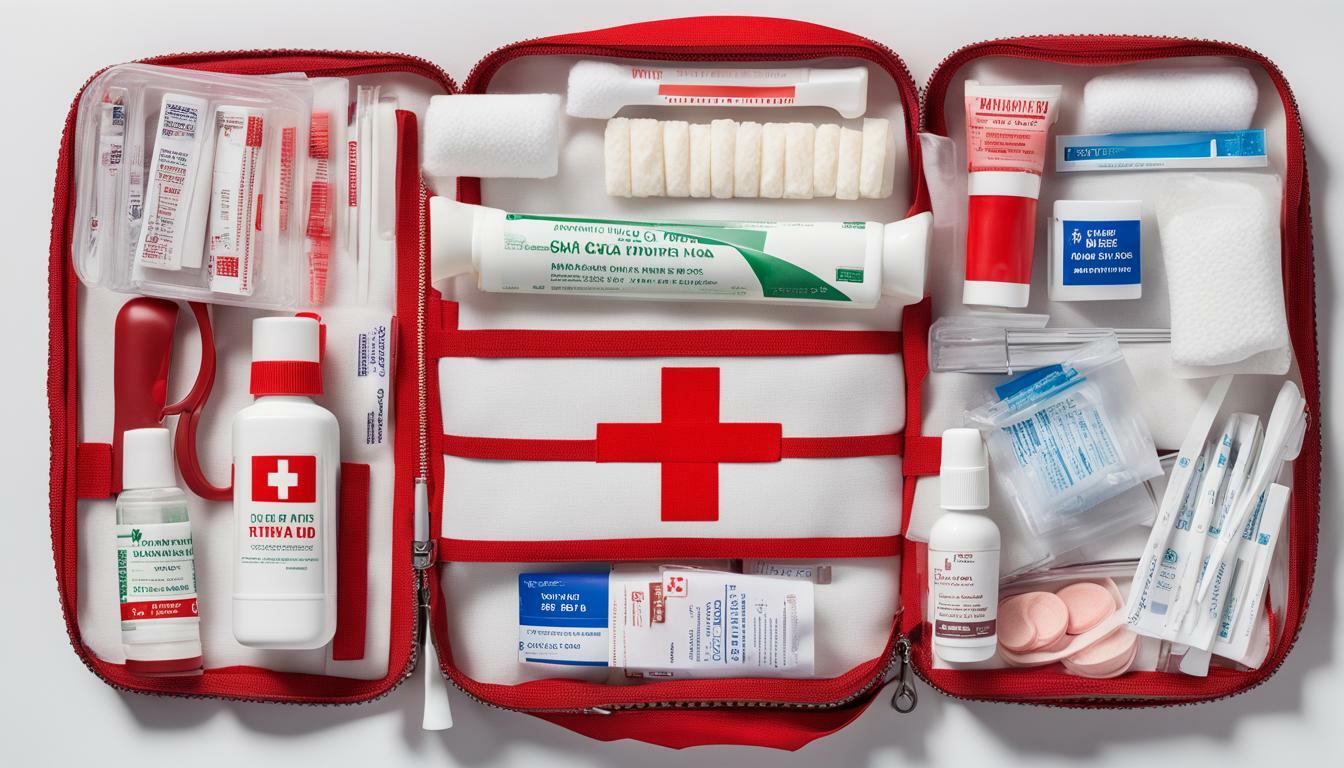Accidents happen, and it’s essential to be prepared for them. Having a well-stocked first aid kit can make a significant difference in managing minor injuries, including cuts and scrapes. Whether it’s a small cut from chopping vegetables in the kitchen, a scrape from falling off a bike, or a paper cut, having the right supplies on hand is crucial to stop bleeding, prevent infection, and promote healing.
In this section, we will delve into the basics of first aid kit essentials for caring for cuts and scrapes in the UK. We’ll discuss wound care, treatment, prevention, and management, as well as provide some useful first aid tips.
Key Takeaways:
- A well-stocked first aid kit is essential for managing minor injuries like cuts and scrapes.
- Wound care, treatment, prevention, and management are crucial to prevent infection and promote healing.
- Regularly checking and restocking your first aid kit can ensure you are prepared in times of need.
Understanding Wound Care
Proper wound care is essential for preventing infection and promoting quick healing. Regardless of the severity, all wounds should receive immediate care to prevent further damage to the skin and underlying tissues.
Wound care refers to all the essential steps involved in treating a wound, including cleaning, disinfecting, and dressing it. Effective wound care not only promotes healing but also helps prevent complications such as infection and scarring.
Wound Healing Process
The human body has a natural healing process that begins as soon as an injury occurs to the skin. The wound healing process is divided into four phases:
| Phase | Description |
|---|---|
| Hemostasis | The bleeding stops, and a blood clot forms to prevent further blood loss. |
| Inflammatory Phase | The wound becomes red, swollen, and painful due to the body’s natural defense mechanism. White blood cells migrate to the wound to fight off any potential infection. |
| Proliferative Phase | During this phase, the body produces new blood vessels, and new skin tissue grows to cover the wound. |
| Maturation Phase | The wound fully heals, and the new skin tissue strengthens and contracts. |
Wound healing time varies based on several factors, including the size of the wound, location, and the general health of the individual.
Wound Treatment
Appropriate wound treatment depends on the type and severity of the injury. Minor cuts and scrapes can usually be treated at home, while more severe wounds may require medical attention.
The initial step in wound treatment is to stop any bleeding and clean the wound thoroughly. This process requires careful attention to avoid introducing any foreign material or bacteria into the wound. After cleaning the wound, dressings should be applied to protect the injury and promote healing.
Wound Prevention and Management
Preventing wounds is the best way to avoid the hassle of wound care and treatment. Practicing good hygiene, wearing protective clothing, and proper use of knives and other sharp objects can help prevent cuts and scrapes in the first place.
For those who suffer from frequent minor wounds, managing them appropriately is crucial in preventing complications. This may include regular wound cleaning, the use of appropriate dressings, and medications such as antibiotics and antiseptics if necessary.

By taking appropriate measures in wound care and treatment, you can promote fast healing and prevent complications such as scarring and infection.
The Essentials for Your First Aid Kit
Cuts and scrapes may be common injuries, but they still require proper wound care to promote healing and prevent infection. A well-stocked first aid kit is crucial for managing minor injuries effectively. Here are the first aid kit basics that you should have in your UK first aid kit:
| First Aid Supplies | Why You Need It |
|---|---|
| Assorted Adhesive Strips and Bandages | To cover and protect wounds. |
| Antiseptic Solution or Wipes | To clean and disinfect wounds to prevent infection. |
| Gauze Pads and Rolls | To absorb blood and help in wound management. |
| Tweezers | To remove debris or foreign objects from wounds. |
| Gloves | To protect yourself from bodily fluids and prevent cross-contamination. |
| Scissors | To cut dressings or bandages to the appropriate size. |
| Instant Cold Pack | To reduce swelling and pain in case of a sprain, strain, or bruise. |
Make sure to check your first aid kit regularly to ensure that all items are up-to-date and not expired. Also, customize your kit according to your needs. For example, if you frequently participate in outdoor activities, you may want to include a snakebite kit, a whistle, or an emergency blanket.
Don’t have a first aid kit yet? Don’t worry! You can easily purchase a ready-made kit at your local drugstore or online.
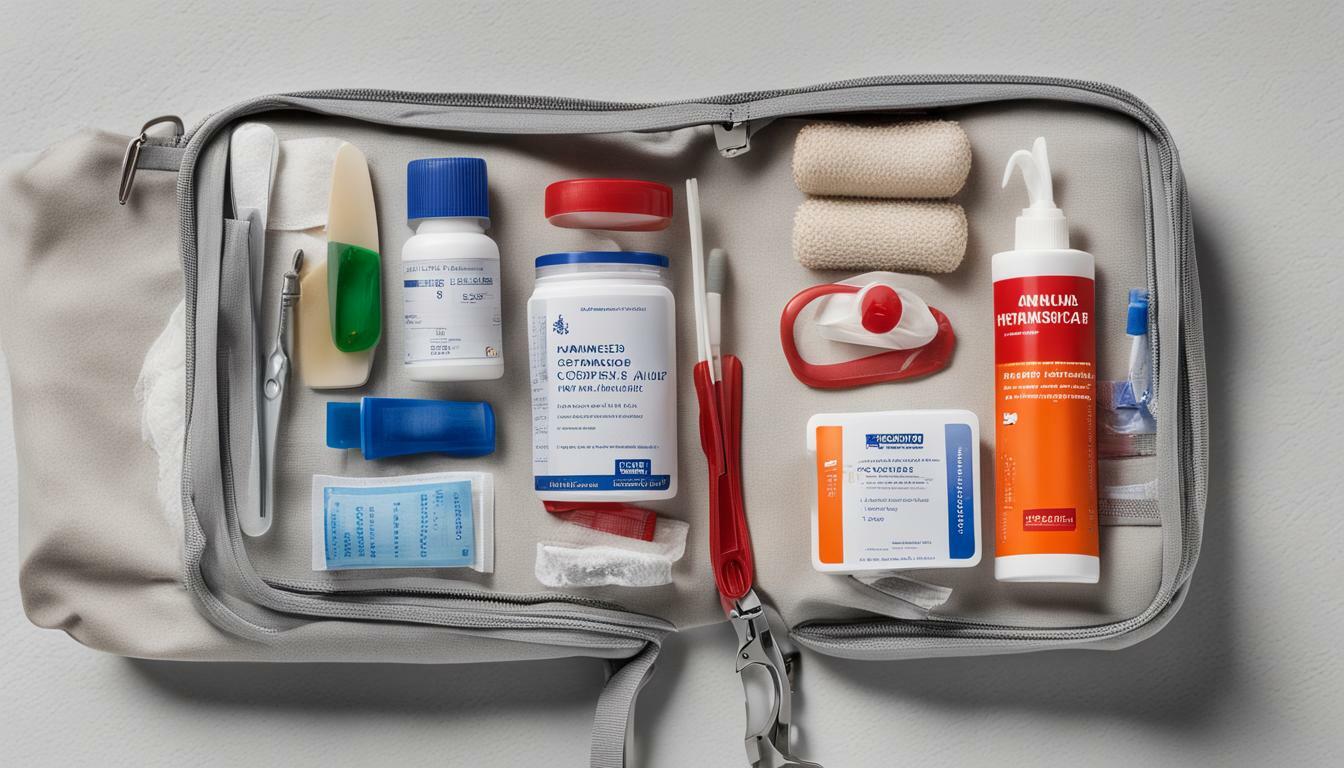
Choosing the Right Dressings
Choosing the right dressing is an essential aspect of effective wound care. The type of dressing will depend on the size and severity of the wound, as well as its location.
Adhesive dressings, also known as plasters, are the most commonly used type of dressing for minor cuts and scrapes. They come in a variety of shapes and sizes and are designed to stick directly onto the skin. Adhesive dressings are ideal for wounds that are not too deep or large.
Gauze dressings are another type of dressing that is frequently used in wound care. Gauze dressings, also known as pads, are highly absorbent and are ideal for wounds that produce a lot of fluid. They can be held in place with adhesive tape or a bandage.
Hydrogel dressings are ideal for wounds that require moist healing. They are particularly useful for burns or wounds that are slow to heal. Hydrogel dressings can keep the wound moist and prevent it from drying out, which helps promote healing.
It is important to ensure that you have an adequate supply of different types of dressings in your first aid kit, so that you can select the one that is most appropriate for each wound.
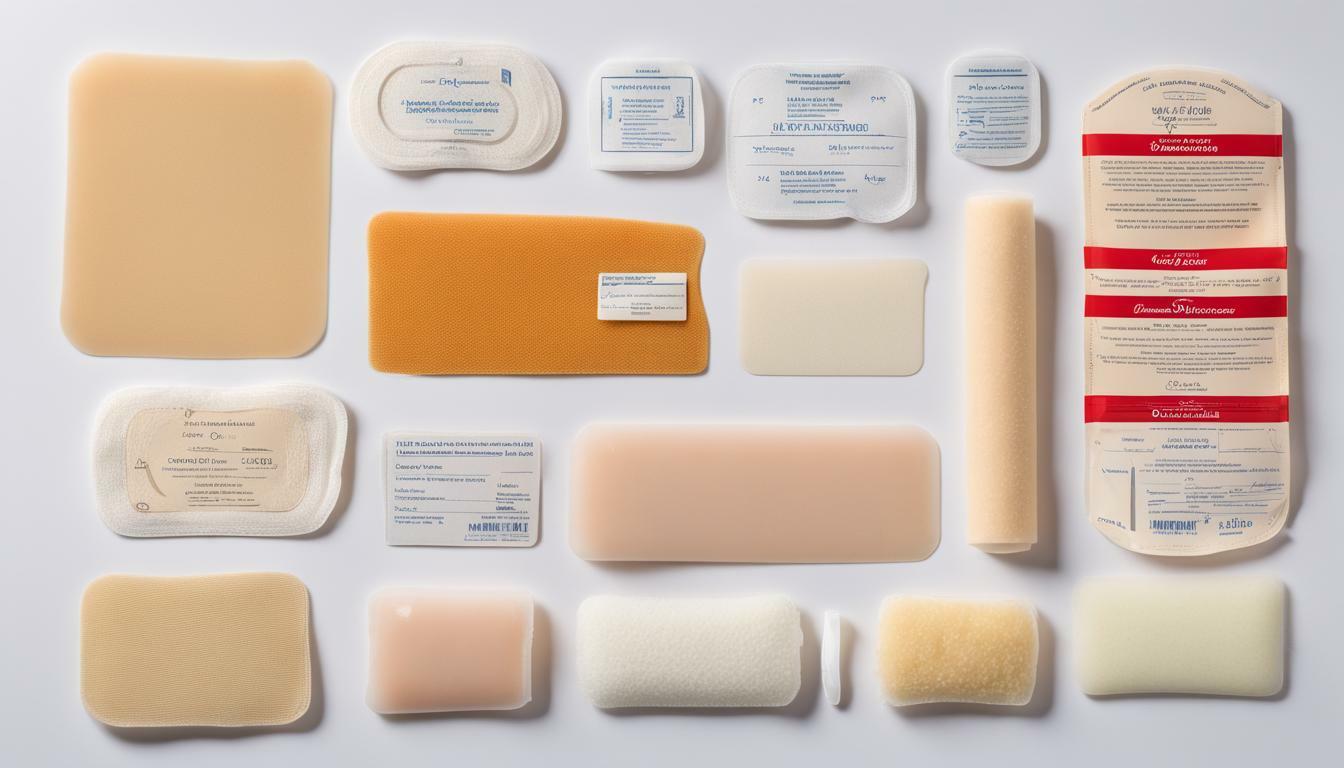
It is also worth considering the material of the dressing, particularly if the person has sensitive skin. Some dressings contain materials that can cause skin irritation or allergic reactions. When selecting dressings, look for those that are hypoallergenic or designed for sensitive skin.
Remember to always wash your hands before applying dressings to prevent the wound from becoming infected. Change dressings regularly, according to the instructions on the packaging or as directed by a healthcare professional.
Cleaning and Disinfecting Wounds
Proper wound care starts with cleaning and disinfecting the affected area. This step is crucial for preventing infections and promoting quick healing.
The first step in cleaning a wound is to gently rinse it under cool tap water. Avoid using hot water, as it can damage the injured skin.
Next, use a mild soap to clean the wound. Gently lather the soap around the wound, taking care not to scrub the injured area. Rinse the soap off with clean water and pat the wound dry with a clean towel.
Once the wound is clean, disinfect it with an appropriate antiseptic solution. In the UK, commonly used antiseptics include chlorhexidine, hydrogen peroxide, and rubbing alcohol. Apply the antiseptic solution to the wound using a clean cotton ball or swab, and let it air dry.
It is important to note that not all wounds require disinfecting. Minor cuts and scrapes that are clean and not bleeding excessively may not need antiseptic treatment. However, if you are uncertain, it is always best to err on the side of caution and disinfect the wound.
Monitoring the wound for signs of infection, such as redness, warmth, and pus drainage, is also important. If you notice any of these symptoms, seek medical attention immediately.
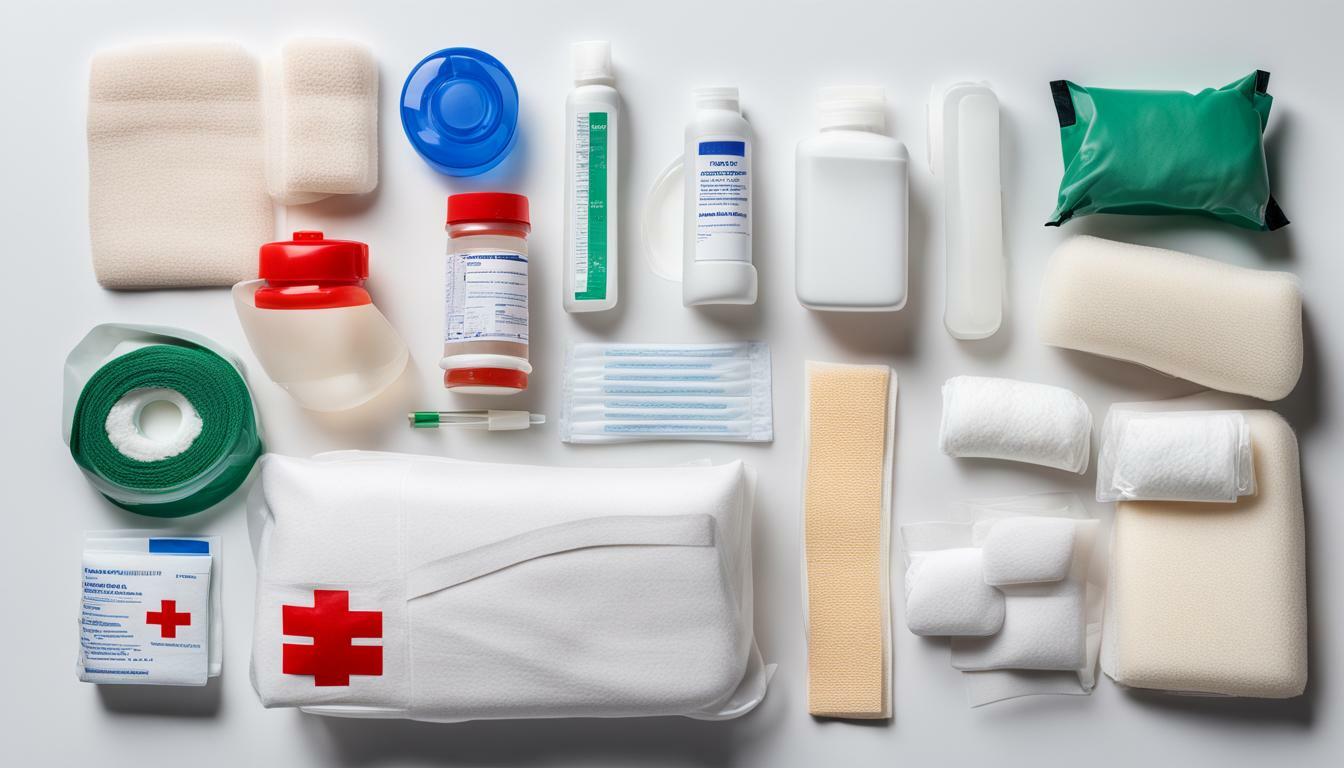
Having the appropriate first aid supplies on hand is crucial for properly cleaning and disinfecting wounds. Make sure your first aid kit contains antiseptic solutions, cotton balls or swabs, and clean towels.
Managing Bleeding
When a wound results in bleeding, it is important to manage the bleeding effectively to prevent excessive blood loss. Here are some steps you can take:
- Apply pressure: Use a clean cloth or bandage to apply firm pressure directly on the wound. Maintain pressure for at least 10 minutes to stop the bleeding.
- Elevate: If the wound is on an arm or leg, elevate the affected limb above the level of your heart to help reduce blood flow to the area.
- Use a hemostatic agent: If the bleeding is severe, consider using a hemostatic agent. These are substances that help to promote blood clotting and are available in powder, gauze, or liquid form.
If the bleeding does not stop after 15 minutes, or if the wound is large, deep, or on the head, neck, or torso, seek medical help immediately.
It is important to remember to always have the appropriate first aid supplies in your kit to manage bleeding effectively. This includes sterile gauze pads, adhesive bandages, and a hemostatic agent if necessary.

Caring for Healing Wounds
Proper care of wounds during the healing process is crucial for preventing infection and promoting optimal healing. Here are some important tips for caring for your healing wounds.
Regular Wound Checks
It is important to regularly check the progress of your wound and ensure that it is healing properly. This involves removing the dressing, cleaning the wound, and examining it for signs of infection or other issues. If you notice any redness, swelling, or discharge, it is important to seek medical attention right away.
Changing Dressings
Changing your wound dressing regularly is essential for maintaining a clean and healthy healing environment. Follow the instructions provided by your healthcare provider or the packaging of your wound care products for the recommended frequency of changing dressings.
Promoting Healing
To promote optimal healing, it is important to keep the wound clean and moist. This can be achieved through the use of appropriate wound care products, such as hydrogel dressings or petroleum jelly. It’s also important to avoid picking at scabs or exposing the wound to unnecessary friction or pressure, which can slow the healing process and increase the risk of infection.
Dealing with Issues
Despite your best efforts, issues may arise during the wound healing process. Infections, scarring, and other complications can occur. If you experience any issues or concerns, seek medical attention promptly. Prompt treatment can help prevent complications and promote optimal healing.
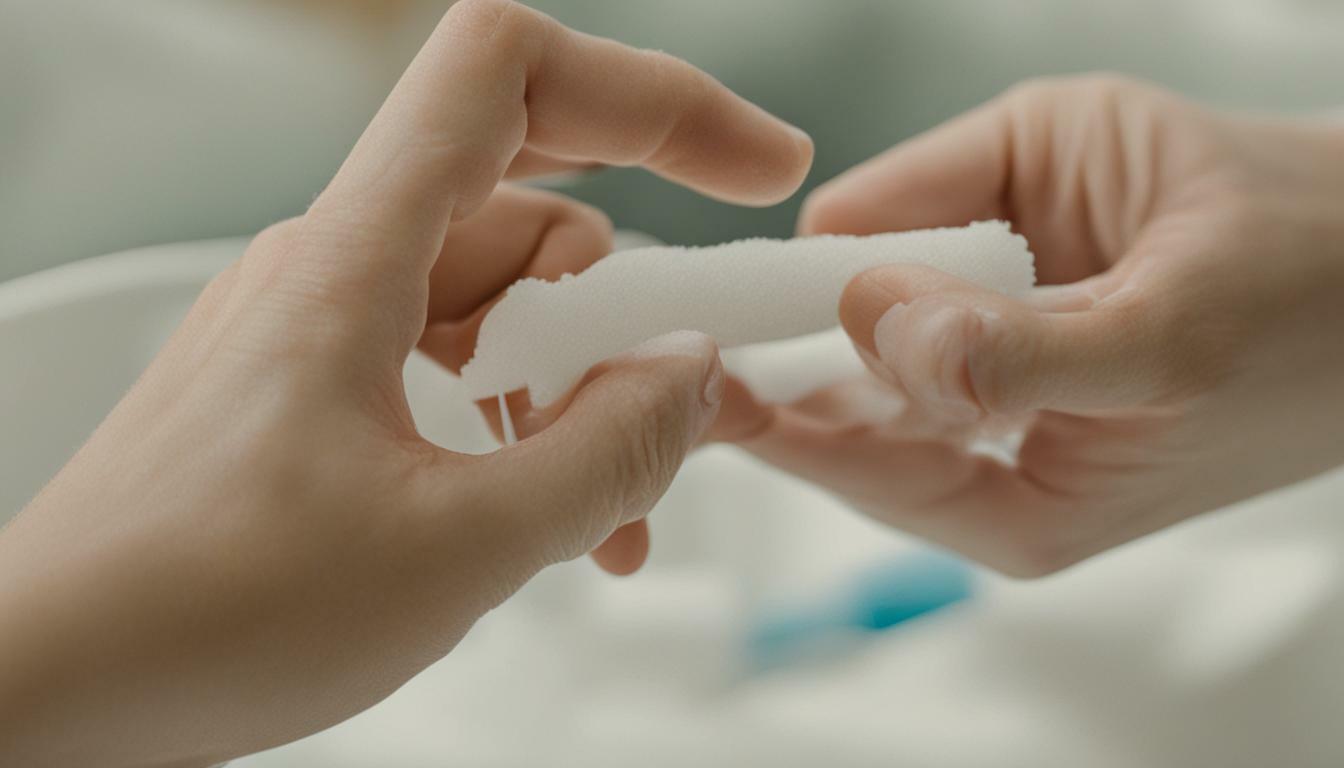
By following these wound care tips, you can help ensure a quick and successful healing process. Remember to keep your first aid kit well-stocked with the necessary wound care supplies to manage any new injuries.
Additional First Aid Tips
When it comes to caring for cuts and scrapes, there are a few additional tips that can come in handy.
- Managing pain: Applying ice or a cold compress can help reduce pain and swelling. Over-the-counter pain medications, such as paracetamol or ibuprofen, can also provide relief.
- Reducing swelling: Elevating the affected area can help minimize swelling.
- Ensuring proper wound protection: To prevent further injury or infection, consider covering the wound with a sterile dressing or bandage.
- Knowing when to seek medical attention: While most cuts and scrapes can be managed at home, it’s important to seek medical attention if the wound is deep, bleeding heavily, or showing signs of infection such as redness, swelling, or pus.
By following these additional first aid tips, you can provide optimal care for minor injuries and promote faster healing.
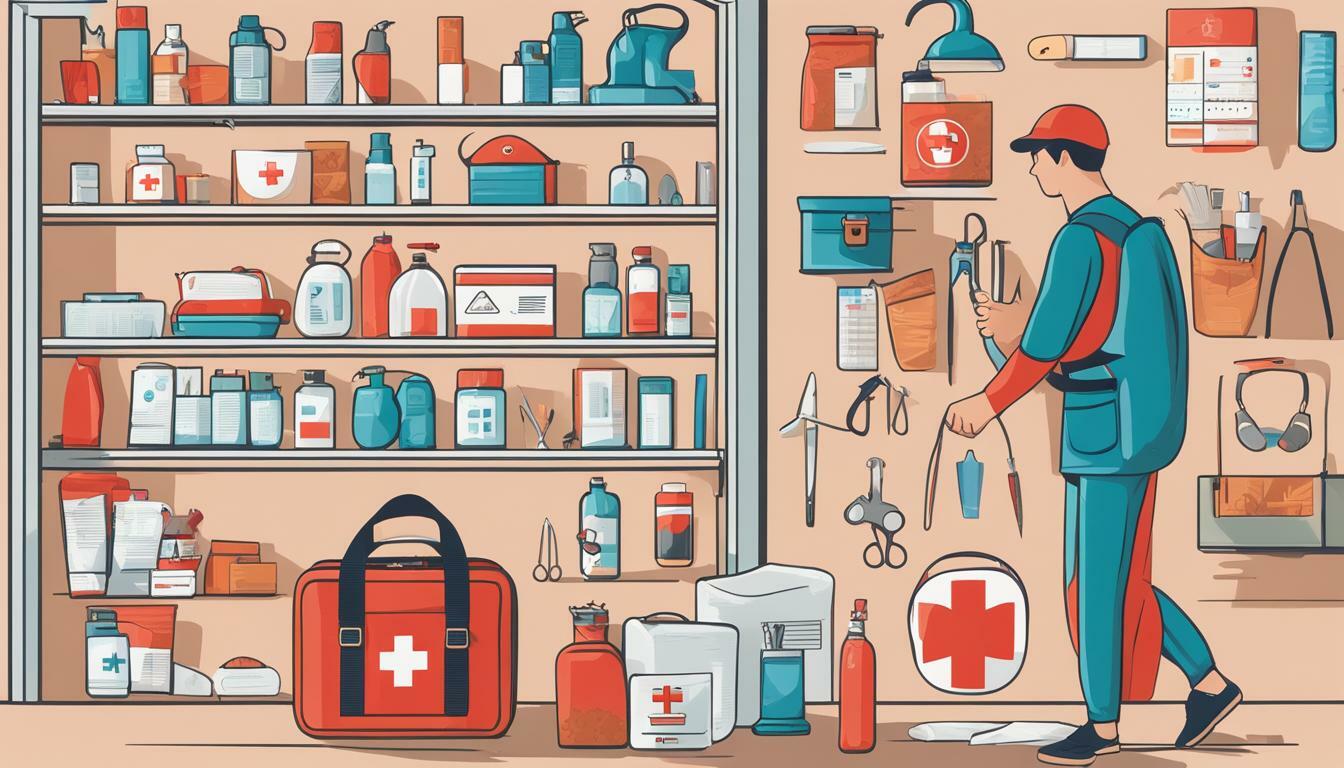
Importance of First Aid Training
Having a well-stocked first aid kit is crucial, but knowing how to use it effectively is equally vital. Taking a first aid course can help you develop the necessary skills and knowledge to handle emergencies confidently.
During a first aid course, you will learn about various injuries and medical conditions and how to provide immediate care for them. You will be taught how to use first aid supplies in your kit, such as bandages and antiseptic solutions, and how to manage bleeding and other emergencies.
First aid courses also provide opportunities to practice different techniques, such as CPR and the recovery position, so that you can respond appropriately in different situations. Additionally, first aid training can help you develop important life skills, such as communication and problem-solving, that can be beneficial in your personal and professional life.
There is a range of first aid courses available in the UK, from basic to advanced levels. The British Red Cross and St John Ambulance offer first aid courses that cater to different needs and schedules. Additionally, many workplaces and schools provide first aid training to their employees and students.
Obtaining a first aid certification can boost your confidence in responding to emergencies and empower you to play an active role in promoting health and safety in your community.
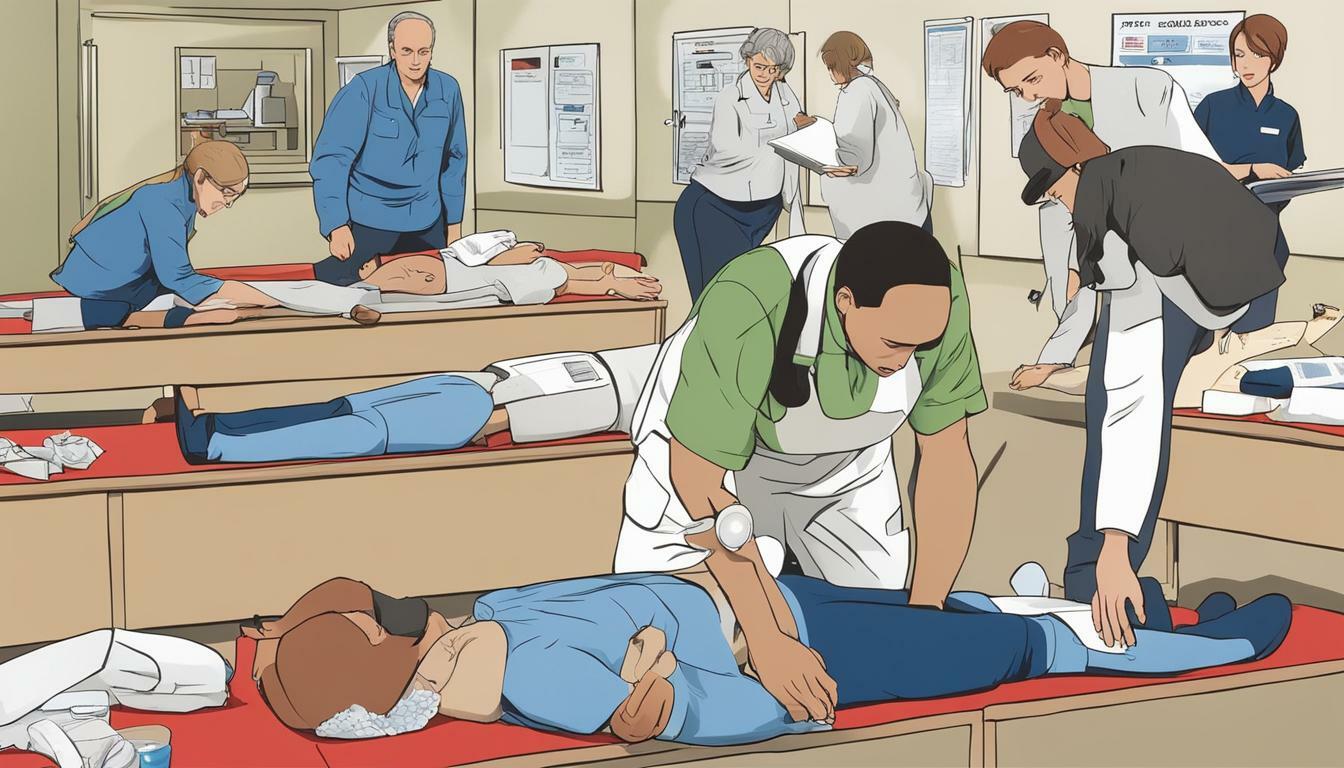
Conclusion
Cuts and scrapes are common minor injuries that can happen at any time. By having a well-stocked first aid kit and knowing how to use its contents, you can provide immediate care and promote optimal healing. Remember to regularly check and restock your first aid kit to ensure its readiness in times of need. By following the tips and guidelines outlined in this article, you can confidently handle minor injuries and contribute to better overall health and well-being.
The Importance of First Aid Training
It is essential to know how to use your first aid kit to provide effective care in emergency situations. Taking a first aid course is a great way to gain the necessary skills and knowledge to respond to a wide range of injuries and illnesses. Many organisations in the UK offer first aid training courses, including the British Red Cross and St John Ambulance. By enrolling in a course, you can be better prepared to handle emergencies and potentially save lives.
